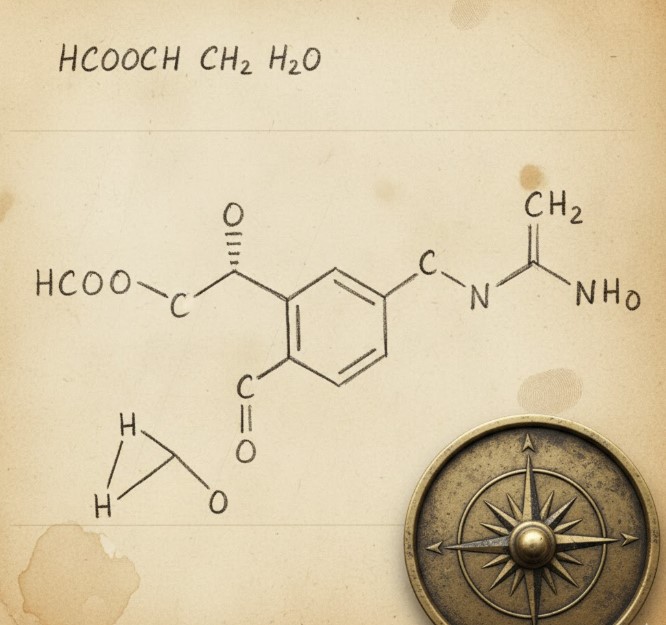The formula HCOOCH CH2 H2O may look complicated at first, but it represents an essential combination in organic chemistry, industrial production, and green chemistry. Let’s break it down: this combination includes HCOOCH (methyl formate), CH2 (methylene group), and H2O (water). These components are involved in various chemical reactions, notably hydrolysis, and have far-reaching implications in producing widely used products like formic acid and methanol.
In this article, we’ll explore the HCOOCH CH2 H2O system in depth, examining its chemistry, real-world applications, environmental impact, and much more.
Introduction
Understanding the HCOOCH CH2 H2O chemical system is key to understanding many important chemical reactions and industrial processes. The formula represents the ester hydrolysis reaction between methyl formate (HCOOCH), methylene (CH2), and water (H2O), which produces valuable chemicals such as formic acid and methanol. These compounds have far-reaching applications in industry, green chemistry, and environmental sustainability.
In this article, we will dive into each component of HCOOCH CH2 H2O, exploring its chemical breakdown, reaction mechanisms, and real-world uses.
Breaking Down the Chemical Formula – HCOOCH CH2 H2O
To understand HCOOCH CH2 H2O, we must break down its components:
- HCOOCH (Methyl Formate):
Methyl formate is an ester formed by the reaction of methanol and formic acid. Its molecular structure consists of a formyl group (HCOO) bonded to a methyl group (–CH3). Methyl formate is a colorless liquid with a pleasant, ether-like smell and is used as a solvent in chemical processes. - CH2 (Methylene Group):
The CH2 group refers to a methylene unit, a reactive part of many organic molecules. It plays a crucial role in polymer synthesis, organic reactions, and the formation of complex chemical compounds. - H2O (Water):
Water is a universal solvent and plays a critical role in the hydrolysis reaction of methyl formate. Its polarity and hydrogen bonding capabilities make it an essential reactant in ester hydrolysis, where it helps break down the ester bond to produce formic acid and methanol.
Chemical Reaction – Hydrolysis of Methyl Formate (HCOOCH₃ + H₂O)
The most significant reaction involving HCOOCH CH2 H2O is the hydrolysis of methyl formate. In this reaction, methyl formate (HCOOCH₃) reacts with water (H₂O), breaking down into formic acid (HCOOH) and methanol (CH₃OH). The reaction is represented as:
HCOOCH₃ + H₂O → HCOOH + CH₃OH
This ester hydrolysis is a crucial reaction in both laboratory settings and industrial applications, where it transforms an ester into an alcohol and an acid—two valuable compounds in manufacturing and chemical synthesis.
Reaction Mechanism of HCOOCH CH2 H2O
The hydrolysis mechanism of methyl formate involves several key steps:
- The carbonyl oxygen of the methyl formate molecule is protonated, making the carbon atom more electrophilic.
- Water molecules attack this electrophilic carbon, forming a tetrahedral intermediate.
- A proton transfer leads to the cleavage of the ester bond, releasing methanol and a protonated form of formic acid.
- The protonated formic acid is then deprotonated to yield neutral formic acid (HCOOH).
This reaction mechanism is essential in understanding ester hydrolysis and is widely studied for its importance in both chemical research and industrial production.
Physical and Chemical Properties
The physical and chemical properties of the compounds involved in the HCOOCH CH2 H2O system are key to their industrial use:
- Methyl Formate:
Methyl formate is a colorless, volatile liquid with a boiling point of 32°C. It is highly flammable and has a sweet, ether-like odor. It is slightly soluble in water but mixes well with organic solvents. - Formic Acid:
Formic acid is a colorless liquid with a pungent odor. It has a boiling point of 100.8°C and is completely miscible with water, making it essential in industrial processes like leather tanning and as an antibacterial agent. - Methanol:
Methanol is a flammable alcohol with a boiling point of 64.7°C. It is highly soluble in water and is widely used as a solvent, fuel, and in the production of formaldehyde. - Methylene Group (CH2):
The CH2 group is highly reactive and often serves as a building block in polymer chemistry. While it is not stable on its own, it plays a crucial role in the reactivity of organic molecules.
Industrial Applications of HCOOCH CH2 H2O
The HCOOCH CH2 H2O system has numerous industrial applications, particularly in the production of formic acid and methanol:
- Formic Acid Production:
Formic acid is used in textile dyeing, leather processing, and as a preservative in animal feed. It also has applications as a reducing agent in various chemical reactions. - Methanol Production:
Methanol is used in the production of biodiesel, formaldehyde, solvents, and plastics. It also serves as a hydrogen carrier in fuel cells. - Polymer Synthesis:
The CH2 group plays a vital role in polymer synthesis, helping create materials like plastics, synthetic fibers, and resins. - Green Chemistry:
In green chemistry, the HCOOCH CH2 H2O reaction is used to create sustainable chemicals, reducing reliance on fossil fuels.
Role of Water in HCOOCH Reactions
Water is more than just a solvent in the HCOOCH reaction. It plays an active role in ester hydrolysis, helping break the ester bond and form valuable products like formic acid and methanol. Water’s ability to form hydrogen bonds stabilizes transition states and intermediates during the reaction, ensuring that it proceeds efficiently. Its ability to regulate pH is also crucial in controlling the speed and yield of reactions, especially in industrial settings.
Laboratory Techniques Involving HCOOCH CH2 H2O
In laboratories, the HCOOCH CH2 H2O reaction is a common method for studying ester hydrolysis. Techniques like refluxing, titration, and spectroscopy (NMR, IR) are used to monitor reaction progress and determine the final product. pH control is essential, particularly when deciding between producing formic acid or formate salts.
Safety and Handling Guidelines
The chemicals involved in HCOOCH CH2 H2O reactions must be handled with care:
- Methyl Formate: Highly flammable and toxic if inhaled. Use in well-ventilated areas with proper PPE.
- Formic Acid: Corrosive and can cause severe burns. Wear gloves, goggles, and protective clothing.
- Methanol: Toxic and flammable. Avoid ingestion, inhalation, and prolonged skin contact. Store in sealed containers away from heat sources.
Environmental Impact and Sustainability
The HCOOCH CH2 H2O reaction is significant for green chemistry due to the biodegradable nature of formic acid and methanol. When derived from renewable sources, these chemicals help reduce environmental impacts and carbon emissions. The use of water as a solvent eliminates the need for harmful organic solvents, promoting sustainability in chemical production.
Real-World Examples and Use Cases
- Formic Acid in Fuel Cells:
Formic acid is used in direct formic acid fuel cells (DFAFCs), providing power for portable electronic devices. - Methanol in Green Chemistry:
Methanol is used in fuel production and as a solvent in various green chemistry applications.
Common Misconceptions About HCOOCH CH2 H2O
One common misconception is that HCOOCH CH2 H2O refers to a single molecule. In reality, it represents a reaction system involving methyl formate, methylene, and water. Another misunderstanding is the assumption that the CH2 group is stable on its own—it is actually a transient group in larger molecules. Water is also mistakenly viewed as a passive solvent, when it actively participates in breaking ester bonds.
Future Research and Innovations
The HCOOCH CH2 H2O system is a subject of ongoing research in nanotechnology, fuel cells, and sustainable chemistry. Advances in catalysts, green synthesis pathways, and carbon-neutral processes are expected to drive innovations in energy production, polymers, and green chemistry.
Conclusion
The HCOOCH CH2 H2O system plays a crucial role in organic chemistry, industrial applications, and green chemistry. Understanding its components—methyl formate, methylene, and water—opens doors to sustainable chemical processes, cleaner manufacturing, and efficient energy production. With a growing emphasis on environmentally friendly practices, this chemical combination offers tremendous potential for the future.
FAQs About HCOOCH CH2 H2O
What type of reaction is HCOOCH CH2 H2O? It is an ester hydrolysis reaction, where water breaks an ester bond to produce an acid and alcohol.
What is HCOOCH CH2 H2O? It represents a chemical system involving methyl formate, methylene, and water, commonly used in ester hydrolysis reactions to produce formic acid and methanol.
What happens when HCOOCH reacts with water? It undergoes hydrolysis, breaking down into formic acid and methanol, a common ester hydrolysis reaction.
Why is HCOOCH CH2 H2O important in industry? It produces valuable chemicals like formic acid and methanol, used in various industrial processes, including fuel production and chemical manufacturing.
Is HCOOCH CH2 H2O safe? The chemicals involved are hazardous and require proper handling with protective equipment to avoid toxicity, flammability, and corrosive damage.
For More Updates Visit: Biomagazine











Leave a Reply